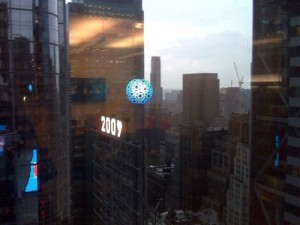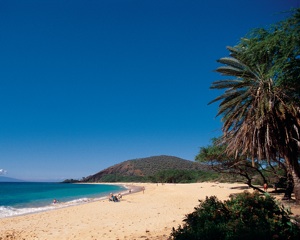 At least three tornadoes struck northwestern Louisiana and at least two tornadoes struck Arkansas, both arising from thunderstorms. USA Today has a great interactive graphic showing how tornadoes form. Heavy rains in connection with the storms flooded roads in Arkansas. In Shreveport, Louisiana, the tornado blew a landmark steeple off of a church, which hit a car, trapping the driver who had to be removed from his vehicle by rescuers. He suffered broken bones, but another driver died when his car hit a tree knocked down by the storms. These tornadoes come as the peak of what has turned out to be a very mild hurricane season is behind us, a sober reminder of the diverse risks we face.
At least three tornadoes struck northwestern Louisiana and at least two tornadoes struck Arkansas, both arising from thunderstorms. USA Today has a great interactive graphic showing how tornadoes form. Heavy rains in connection with the storms flooded roads in Arkansas. In Shreveport, Louisiana, the tornado blew a landmark steeple off of a church, which hit a car, trapping the driver who had to be removed from his vehicle by rescuers. He suffered broken bones, but another driver died when his car hit a tree knocked down by the storms. These tornadoes come as the peak of what has turned out to be a very mild hurricane season is behind us, a sober reminder of the diverse risks we face.
Tornadoes Strike Louisiana and Arkansas
October 30th, 2009Fake Security Software Threatens Computers
October 27th, 2009According to software company Symantec, tens of millions of computers across the U.S. are infected with scam security software that their owners may have purchased, but which only leave them more vulnerable. The owners are duped into providing their credit card and other personal information when a fake security alert pops up as the computer user accesses a legitimate website. The alert claims to have found a virus and offers to correct it with security software. In fact, the alerts are established by very sophisticated cyber-thieves. Symantec found 250 varieties of scam security software with names that appear legitimate, such as “Antivirus 2010” and “SpywareGuard 2008”. Actually, I found one such infection on my parents’ computer identified as “antivirus.exe”. About 43 million downloads of the scam software were attempted in the past year, but it is unknown how many succeeded. To increase their reach, the cyber-thieves recruit middlemen who earn between one and 55 cents each time a person downloads the software. One such site, which is now closed, TrafficConverter.biz, reported that its leading affiliates earned as much as $332,000 monthly for selling scam security software. The refined affiliate sales model is very sophisticated and can confound your small business security efforts. Educate your employees not to click on any such alerts and only purchase security software from a trusted source, not one that is pushed out to you from the web.
Mildest Hurricane Season Since 1982
October 26th, 2009Since June 1, the official start of the Atlantic storm season, only two hurricanes have formed, making this the mildest hurricane season since 1982, which also saw only two hurricanes. This year, eight tropical storms strengthened to be named storms, the lower number since 1997, but only one storm, Claudette, made landfall in the U.S. Claudette formed in the Gulf of Mexico and struck the Florida panhandle on August 16 and 17. No hurricanes made landfall in the U.S. this season to date. Still, the National Hurricane Center in Miami advises us not to become complacent as the hurricane season does not officially end until November 30. Nevertheless, the peak hurricane season occurs from late August until mid-October, so the worst may be behind us for 2009. The U.S. may have benefited from the “El Niño” climate phenomenon in which warmer waters in the Pacific Ocean produce weather patterns that create wind shear in the Atlantic Ocean. The wind shears, strong winds blowing from different directions at different altitudes, can tear apart tropical waves emerging from the African coast that can develop into hurricanes.
The respite is surely welcome in the Gulf Coast states, which are still recovering from a very active hurricane season in 2005, when the National Hurricane Center ran through the alphabet in naming 28 tropical storms. A spokeswoman for the Property Casualty Insurers Association of America stated that insurers will use 2009 to rebuild their claims reserves after paying out more than $90 billion over the past decade in connection with hurricane losses. The break is particularly welcome for small businesses that would have difficulty budgeting for hurricane-related evacuations in this difficult economy. However, we should also remember that while hurricanes provide graphic imagery on television, it was a tornado that killed 21 people in Central Florida on February 2, 2007. As always, we must be ready for the everyday disaster to build resilience for the more serious ones.
Perils of a Small World
October 25th, 2009President Barack Obama declared a national emergency, granting additional powers to US hospitals to address the spread of swine flu, the H1N1 virus. This marks the third declaration by federal authorities this year to address this growing public health crisis, which is now widespread in 46 of the 50 states and has killed more than 1,000 people since this spring. According to Tom Frieden, head of Centers for Disease Control and Prevention, only 16 million doses of the flu vaccine are available for the states to order. Concern is rising as winter months bring colder, damper weather that keeps people indoors and may accelerate transmission of the flu virus.
The World Health Organization reports rising infections in Canada, the UK, Belgium, the Netherlands, Norway, Israel and India. Confirmed infections in England alone doubled over the past week to an estimated 53,000. Globally, more than 5,000 people this year have died from the fly and an additional 400,000 are infected with the virus. In addition to the economic reasons for cutting back on business travel, now there is another: reduced rates of transmission. Take appropriate precautions at your workplace and urge employees who think they may have symptoms to remain home, just to be extra cautious.
Swine Flu Vaccine On Its Way
September 28th, 2009On October 5, the first shipments of 6 – 7 million doses of the nasal spray swine flu vaccine will arrive in doctor’s offices. Thereafter, another 40 million doses of injectable vaccine will be delivered, with another 10 million to 20 million doses shipped weekly. Public health experts believe that those who most need the vaccine are pregnant women, health workers, young people and parents and caregivers of infants younger than six months. Check the website of your state’s public health department for further details. The vaccine is free, so be sure to advise your employees and their families.
Typhoon Kills 95 in the Philippines
September 27th, 2009A typhoon swept the main island of Luzon in the Philippines, killing at least 95 people and displacing more than 337,000 residents. The event sadly recollects Katrina as delays in the rescue of flood victims provoked public anger towards President Gloria Macapagal Arroyo’s government. Civilian and military rescuers have struggled for two days to reach people stranded on the rooftops of their flooded homes waving for food and supplies. As of this evening, they have rescued more than 5,000 people. The Philippines disaster management agency reported that 68,550 people were housed in 118 emergency evacuation centers. The government is scrambling to get as many boats as it can for use as rescue vehicles. San Miguel, the largest food and beverage company in the Philippines, offered to purchase up to 50 boats for that purpose and the national dragon boat rescue team also contributed to the effort. Although the typhoon wind speeds reached only 85 km/hour, the storm deposited more than a month’s worth of rain in the capital city of Manila in just six hours, causing the flooding. The storm has moved on towards the South China Sea. The government declared a “state of calamity” in Manila and the surrounding areas, closing many schools and businesses. Particularly for those of us who do business in the Philippines, contributions to the Red Cross and other disaster relief agencies will be welcome.
Microinsurance Partnership in Sri Lanka
September 21st, 2009Microinsurance protects very small enterprises against financial ruin from events such as medical emergencies, drought, flood and other natural disasters. Such disasters occur frequently in the developing world; a mudslide in an urban center can eliminate whatever modest shelters slum dwellers had built. Vulnerability to such risks keeps people trapped in the vicious spiral of poverty. They lack basic social protections or any kind of safety net. And as we know from our experience in the U.S., relief aid rarely trickles down. Microinsurance is complementary to microfinance (the provision of credit) and plays an important role in development. In Sri Lanka, where less than 1% of the country’s 19 million citizens are covered by insurance, there is strong market potential. To develop this sector, Janashakthi Insurance PLC announced a partnership with Hannover Re, one of the world’s largest reinsurers, with 8 billion Euros in annual premiums. It will be interesting to see how this market develops and if such products can be successfully exported to low-income entrepreneurs in the developed world.
Women in the MBA Pipeline
September 20th, 2009The Forte Foundation offers resources to support women business school students, including mentoring and career counseling. With women starting more than one-half of all businesses in the U.S., it certainly makes sense to consider the resources business school can offer you, even if you cannot make the time available to pursue an MBA degree. I benefited from participating in weekend certificate programs of the Continuing and Professional Studies Program at Baruch College of the City University of New York, as well as an entrepreneurial executive education program, Owner President Management, of the Harvard Business School. The networking and peer support is invaluable. Evening, weekend or part-time study may also be an option. Another possibility might be to engage a team of business school students to work on a project for your business for academic credit. These are quite common in MBA programs, and offer the experience of a professor to oversee the project – another way to leverage limited resources in this economy.
California Wildfires Threaten Homes and Businesses
September 19th, 2009California has experienced more than 5,000 fires this year to date. Although the state budget has a $23 billion deficit, a $500 million reserve has been established for emergencies such as fires. A wildfire north of Los Angeles in the San Gabriel Wilderness Area of the Angeles National Forest burned over 140,000 acres and cost $21 million in firefighting services. Thousands of homeowners have been displaced. The regret most often expressed is the failure to preserve treasured family photographs, as those memories cannot be replaced. I have all of my photographs scanned in and stored online for safekeeping. The cost is negligible and the benefit incalculable.
Moving Back Home Is Not Without Risk
September 18th, 2009With the recession putting pressure on increasingly scarce resources, many small businesses are foregoing leasing office space to return home. While this may result in cost savings, improved lifestyle and no commuting expense, there are several issues to consider. The first concerns compliance with your lease or homeowner’s association rules. You could inadvertently cause a violation of your lease or city codes. One issue that might be problematic is if your home-based business attracts a steady stream of visitors that may violate your reasonable use clause. Or constant shipments via UPS or FedEx for an eBay sales business could be considered a quality of life violation for your neighbors. Some businesses, such as food-service businesses, could be considered health code violations and others may require special permits. So investigate the requirements for your business to make sure you are in compliance.




